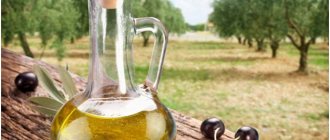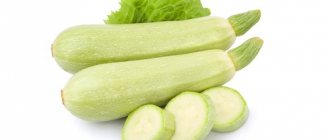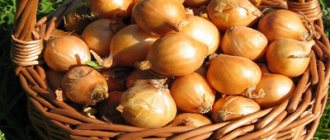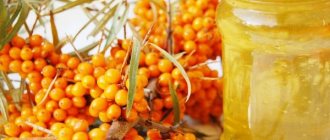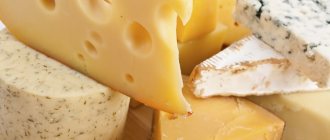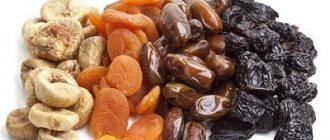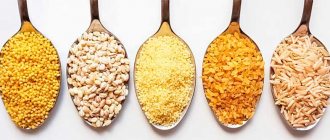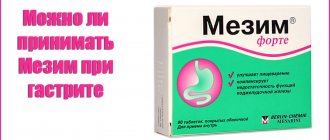Is it possible to eat butter if you have gastritis?
Butter contains milk fat. Gastritis is a disease that disrupts the integrity and functioning of the gastric mucosa, which cannot cope with excessive stress when eating fatty foods, causing pain. Therefore, low-fat diets are prescribed, and the consumption of baked goods, spicy foods and ready-made breakfasts is also prohibited.
With increased acidity, also exclude products that can change the acidity of gastric juice: salt, fermented milk products, cheeses.
Oil fat content
For inflammatory diseases of the stomach, it is allowed to take this product in small quantities, but only during periods of remission of the disease. Despite the fact that there is no lactic acid in animal oil, we note that its uncontrolled consumption with various dishes will lead to an increase in cholesterol in the blood. As a result, this may affect the health of the cardiovascular system.
Normally, the fat content of butter is from 60 to 80%. Most people believe that butter offered in grocery stores that has less than 50% fat content is considered healthier. This is not entirely true; such a low amount of fat in butter is not possible. This only confirms the presence of additives in its composition. When animal and vegetable fat are mixed together, margarine is obtained - the most harmful product consisting of trans fats.
But there are also positive effects: when taken in small quantities, the oil envelops the stomach, which helps protect the walls affected by ulcers.
Heat treatment of oil
When heated, the oil loses its beneficial properties that it has in its fresh form. The carcinogens produced when it burns affect health. Frying is prohibited when preparing food. The only use is to heat food in a frying pan, but only by adding a small amount of oil at the end of frying so that it melts but does not burn. In this case, the dish will remain tasty and at the same time healthy.
Contraindications for use and possible side effects
Since the diet of a patient with gastritis is much poorer than that of a healthy person, oils (especially vegetable oils) are an important source of vitamins. A small portion of the creamy product becomes an additional source of nutrients.
The main contraindication for use is exacerbation of the disease. In other cases, it is allowed to consume 25 grams of butter or several tablespoons of vegetable oil per day. However, it is better to take the product in its pure form or add it to cereals. That is, heat treatment is highly not recommended. Even healthy foods fried in butter or vegetable oil can lead to an exacerbation of the disease, inflammation of the pancreas.
Margarine and spreads containing trans fats are extremely dangerous. In addition to irritation of the inflamed stomach walls, the patient may notice high blood pressure and heartburn. Trans fats are also found in baked goods.
The benefits of butter
This product includes a number of vitamins and beneficial elements:
- Retinol;
- Vitamins A, E, D, PP;
- B vitamins;
- Phospholipids;
- Milk fat;
- Beta carotene.
The oil improves digestion and, in small portions, helps fight atherosclerosis and excessive emotional stress. A large amount of vitamin A starts metabolic processes in the body. It also helps nursing mothers increase fat content and add vitamins and elements to milk.
If you are worried about pain
Butter doesn't make your stomach hurt. If this does happen, the culprits are other components of your sandwich - bread, hard cheese or sausage.
Any pain attack cannot be left unattended. In addition to traditional antacids and enzyme preparations, which you probably have, during painful attacks you need to follow a strict diet and consult a specialist. Sometimes pain is an alarming signal and indicates the transition of your gastritis to a more dangerous condition - peptic ulcer disease.
Nutrition during treatment of gastritis
Inadequate nutrition can cause harm to health with gastritis, especially if the food is prepared incorrectly or is spoiled. Depending on the type of gastritis, the menu may vary dramatically.
The main principle of nutrition for stomach diseases is to accelerate the production of gastric juice, as well as the flow of food into the intestines. It is preferable to consume grated vegetables, and fermented milk products only during the period of remission of the disease. The temperature of food, as well as the cooking process itself, must be strictly observed. Food should not be too hot or cold.
DO YOU STILL THINK THAT IT IS HARD TO CURE YOUR STOMACH?
Judging by the fact that you are now reading these lines, victory in the fight against diseases of the gastrointestinal tract is not yet on your side.
Have you already thought about surgery? This is understandable, because the stomach is a very important organ, and its proper functioning is the key to health and well-being. Frequent abdominal pain, heartburn, bloating, belching, nausea, bowel dysfunction. All these symptoms are familiar to you firsthand.
But perhaps it would be more correct to treat not the effect, but the cause? We recommend reading the story of Galina Savina, how she cured her stomach. Read the article >>
Butter, made from dairy cream, is used in the daily diet of every person, be it sandwiches or dressing a variety of dishes. But is it possible to eat butter if you have gastritis? After all, it is widely believed that this disease requires strict dietary restrictions, especially when consuming high-fat foods. Let's find out!
Features of eating food with gastritis
Gastritis has several variants of its course: with high acidity, low acidity, acute and chronic course, with and without complications.
When an acute phase of the inflammatory process occurs, it is necessary to adhere to a strict diet, and a large list of foods becomes prohibited.
Butter for gastritis with high acidity
If acidity is higher than normal, oil consumption is contraindicated. Bread and butter for gastritis can cause pain in the abdominal area. This combination is a big burden on the suffering stomach.
It is also recommended not to use:
- yogurt;
- kefir;
- cottage cheese;
- cheese.
An increased concentration of lactic acid in these products leads to an increase in acidity, as a result of which the possibility of exacerbation of the symptoms of the disease increases. To prevent an increase in acidity during an exacerbation, you need to control the composition of products, avoid dyes, preservatives and stabilizers.
Oil for gastritis with low acidity
Butter made with natural ingredients from cow's milk does not increase the acidity of the stomach. The question arises: is it possible or not to use oil from animal fats for gastritis? Answer: yes. The correct combination and dosage of oil consumption does not harm, but on the contrary, helps to improve the condition. At the same time, sometimes such patients are advised to spend “hungry” days during an exacerbation of the disease.
Butter for erosive gastritis
A properly followed diet is one of the important factors in the treatment of erosive gastritis. The diet allows the gastric mucosa to recover several times faster. There are a number of rules that must be followed for this disease:
- The number of meals is from 4 to 6 times per day.
- Small portion sizes.
- Meals should be at the same time.
- Breaks between meals do not exceed 3 hours
- Food should be well chewed.
- The temperature of the prepared dish should be such that the food does not burn the mouth. Very cold food is also harmful.
- Avoid products that irritate the mucous membrane.
- Avoid frying foods in a frying pan.
- Last meal at least 2 hours before bedtime.
It is worth noting that it is useful to add oil at the end of cooking. Acidity is normalized and the affected walls of the stomach will remain protected from the effects of hydrochloric acid.
Honey with butter
Honey is one of the healthiest foods. It contains vitamins, amino acids, and minerals. Honey has a beneficial effect on the gastric mucosa. Therefore, the folk recipe for treating gastritis using honey and butter is widespread.
But this treatment is not suitable for everyone. It is strictly forbidden to resort to traditional medicine when treating inflammation of the gastric mucosa in children. Honey is a strong allergen, as a result of which it can, on the contrary, cause the development of complications of the disease.
You should also take the mixture with caution if you have diseases of the cardiovascular system, diabetes, tuberculosis, or asthma. Because in addition to its beneficial properties, it is a heavy load for the gastric mucosa. You cannot replace treatment prescribed by a doctor with folk remedies.
Propolis with butter
Propolis helps relieve heartburn. Ground propolis is added to melted butter and kept in a water bath for 30 minutes. 1 teaspoon of medicine helps improve the condition. This mixture helps with exacerbation of heartburn. At the same time, the high acidity of gastric juice returns to normal.
Can it cause harm?
Butter is made from cow's and goat's milk by whipping the cream. Gastroenterologists insist on the mandatory inclusion of butter in the diet of patients with gastritis. It is recommended to use it every day in small doses.
This product can cause undeniable harm if consumed in unlimited quantities or at a low level of quality. Of course, there are much more beneficial properties in oil than the presence of lactic acid in it. Therefore, it can be eaten by people who have increased stomach acidity, as well as those who have decreased acidity. The main principle in this case is compliance with the norm, since you can eat no more than 30 grams of this product per day. Many doctors advise adding natural honey to butter during meals.
How to make your own butter
In grocery stores you can often find an imitation of this natural dairy product, called a spread. It is a mixture of butter, palm, coconut and sunflower oil. Most spreads do not contain dairy products. Therefore, if you have gastritis, spreads are prohibited due to their high health risks.
You can make your own butter. To prepare it you need cream. The preparation process consists of whipping the cream with a mixer, as well as separating the thickened part from the liquid. To make the butter homogeneous, the speed of the mixer must be increased gradually.
General information
Butter is made from cream, the fatty component of milk located in the upper layers of the product. This is where the name “creamy” comes from, and the product itself gained its popularity back in the distant 5th century AD and is popular with consumers to this day due to its harmonious taste.
Butter is a fundamental component of many dishes used to treat and prevent stomach diseases. It is a must-have food for children and adults with weakened bodies, as well as for gastritis with high acidity. This is due to the enormous benefits of this product, since without the help of oil the process of assimilation of vitamins would be impossible. Therefore, you can and should eat butter, but in moderation so that troubles with the body do not become constant companions.
Useful tips
Inflammation of the gastric mucosa is a painful, difficult to cure disease. For treatment to be successful, you must strictly adhere to the medications prescribed by your doctor. As well as a diet that includes giving up a certain list of foods and lifestyle changes. Patients are encouraged to switch to eating small, frequent portions rich in vitamins.
Key tips worth noting:
- Excessively hot and cold foods are prohibited.
- Patients are advised to avoid spicy and sour foods and foods.
- Alcohol and smoking are prohibited.
- Fatty meats and broths are contraindicated for consumption.
- During an exacerbation, patients with gastritis are offered to eat porridge cooked in water.
- Depending on the improvement in the condition after the exacerbation of the disease subsides, the diet is expanded with new products.
- Types of food preparation: stewing, baking, steaming, boiling. Vegetables must be pureed.
Allowed foods for gastritis
- Cereals: semolina, buckwheat, rice, oats, and others. Pasta.
- Dietary soups: vegetable, dairy, with boiled cereals.
- Meat puree.
- Lean meat and fish.
- Yesterday's bread, biscuits, pastries with berries, with meat.
- Steamed vegetables.
- Berries and fruits.
- Dairy products: milk, kefir, cottage cheese and low-fat cheese.
- Butter
- Scrambled eggs.
- Greenery.
Foods that should be excluded from the diet
- Millet, pearl barley, corn, beans.
- Rich broth.
- Fatty meat, canned food.
- Fresh bread.
- Onions, radishes, cabbage, cucumbers, spinach.
- Sour vegetables and fruits.
- Fatty dairy products.
- Factory-made sauces. Ginger.
- Carbonated drinks, concentrated juices, strong tea and coffee.
Choose wisely
Now let's talk about how to choose the right product.
The assortment is huge, the packaging is attractive, the packaging is very different. Here you will find briquettes, jars, and portioned packages - your eyes will run wild. But for gastritis, the main rule of choice is quality and freshness, as well as the absence of harmful components - sweeteners, emulsifiers, dyes and others.
When purchasing a product in a store, pay attention to the following characteristics.
- Package. A high-quality product is always packaged in foil paper; it protects the oil better than any other from exposure to direct sunlight, which destroys beneficial components.
- Inscription. This product can be called like this: butter (fat content from 82.2%), peasant butter (fat content from 72.5%), amateur butter (fat content from 78%). All other similar products with a fat content below the specified value are never natural. There will be vegetable fats and other additives.
- Abbreviation PAGE. She explains that the product complies with technical regulations and is produced correctly, from natural ingredients. By the way, to prepare one pack of high-quality butter, about 20 liters of milk are required. Therefore, natural products from this group will never be cheap. If the price is temptingly low, rest assured you have purchased margarine.
Don’t be lazy to read the ingredients on the package – a quality product contains cream, salt, milk and that’s it. There should be no other impurities. The shelf life of natural butter does not exceed a month. Added preservatives contribute to longer shelf life.
If you decide to go to the market for a quality product, ask the seller for a small piece to try. Real butter melts quickly in the mouth, has no unpleasant odor, and has a soft, creamy taste.
